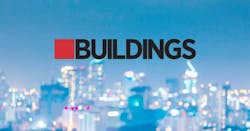New Resiliency-Based Safety Standard for Structures: Positive Influence
Environmental disasters are on the rise and property owners, lenders and insurance companies are paying the price. The planet is seeing hotter heat waves, drier droughts and bigger storm surges, all of which can have devastating effects on infrastructure and investments in building and insuring structures.
But I believe that by following the model established by the popular Leadership in Energy and Environmental Design (LEED) green building certification program, more industries can work together to reduce loan rates and insurance premiums paid via a requirement that calls for more resilient, safer structures.
The benefits of LEED-certified buildings
The LEED initiative is the most widely used green-building rating system in the world. Created by the United States Green Building Council, the program awards structure owners with a point score that awards a level of green certification upon project completion: Certified (40–49 points), Silver (50–59 points), Gold (60–79 points) and Platinum (80+ points).
The higher the points, the higher the rewards, ranging from healthier spaces to buildings that save money and resources2.
Historically, the benefits achieved—in addition to environmental and health gains—have mostly aligned with reputation—and image-building initiatives.
[Related: LEED Zero: 4 Ways to Add Net Zero to Your LEED Certification]
Certified green buildings are great for showcasing an organization’s commitment to sustainability and community. There are also some financial gains correlated to the monies saved via energy efficiency and conservation improvements.
However, for the institutions that financially back building developments or insure projects during and after completion, LEED initiatives have not delivered.
Can we broaden LEED’s financial impact?
Bankers and insurers face increased recovery costs associated with environmental challenges. Take hurricanes in Florida and the Carolinas and the wildfires in Arizona and California, for example.
Events like these are increasingly more common, and each costs financiers and insurers billions of dollars.
Today, the challenge of LEED has been to secure a cheaper cost of capital. LEED’s green initiatives are great for the environment, but are long-term investments that put lenders and insurers in losing situations. I spoke with a representative of a major bank who said, “I like and agree with the sustainability movement. But I have a capital loss problem that must be solved because I’m losing money now. I need a solution I can put into action tomorrow.” That got me thinking.
Could a collective of industries establish LEED-like initiatives that dictate the build of more resilient structures to help investors, insurers and ultimately end consumers reduce financial loses?
[On topic: The RELi Standard and the Future of Resilient Design]
In my view, a LEED-driven component that certifies structural resiliency and safety would lower overall risk and provide a better value and safer investment for lenders and insurance professionals. Developers of new structures would assure financial institutions that a building is designed and constructed to point-driven higher standards, confirming a safer investment.
My hope is the safer investment would equate to a lower interest rate. From an insurance perspective, the risk of damage or catastrophic loss reduces because a given structure is built to a higher level of resiliency, resulting in lower premiums.
BUILDINGS Podcast
The RELi Standard and the Future of Resilient Design
BUILDINGS’ senior staff writer Janelle Penny talks to Doug Pierce, director of Perkins+Will Resilience Research Lab, about the Building Resilience Standard RELi. Listen now >>
An idea that extends beyond electrical safety
Readers that are familiar with my background might be surprised to find me stepping out of my electrical safety comfort zone.
While LEED does have an electrical component in energy management and efficient solutions, with myself and others at Eaton playing a part in strategic LEED initiatives, those components are a small part of a much larger picture.
I suggest an all-encompassing resiliency-based standard where a collective of industries go beyond their core disciplines to impact the greater good and perhaps reap financial benefits in the future.
I envision this team working as a united front to create a draft requirement that pulls from the National Electrical Code, building codes, plumbing codes, HVAC requirements and even insurance actuary data and processes to uncover all the different aspects that we must address to increase safety and financial viability.
Such a draft document would stimulate the market discussions, debates and compromises needed to influence change and realize future economic benefits.
[Check this out: World’s First Powerhouse Hotel in the Arctic Circle]
We must start conversations now
While the cause of disastrous environmental events may always be a topic of debate, there’s little doubt that the weather changes we’re experiencing today impact industries for the worse. Lenders and insurance companies feel the strain while businesses, and ultimately consumers, pay the price.
It’s our responsibility—across all industries—to help solve the problem. We must work together to create a resiliency and safety standard that acts as a catalyst for the conversations we need to achieve meaningful change.
About the author
Thomas A. Domitrovich is an electrical engineer within Eaton’s electrical business with experience in engineering, sales & marketing, business development and product management. He sits on NFPA Code Making Panel 2 for the continued development of the National Electrical Code (NFPA 70). He is also on the NFPA committee for the continued development of NFPA 73 and chairs various committees for other electrical industry organizations. Domitrovich is a LEED® Accredited Professional and a licensed Professional Engineer.
Two handpicked articles to read next:
